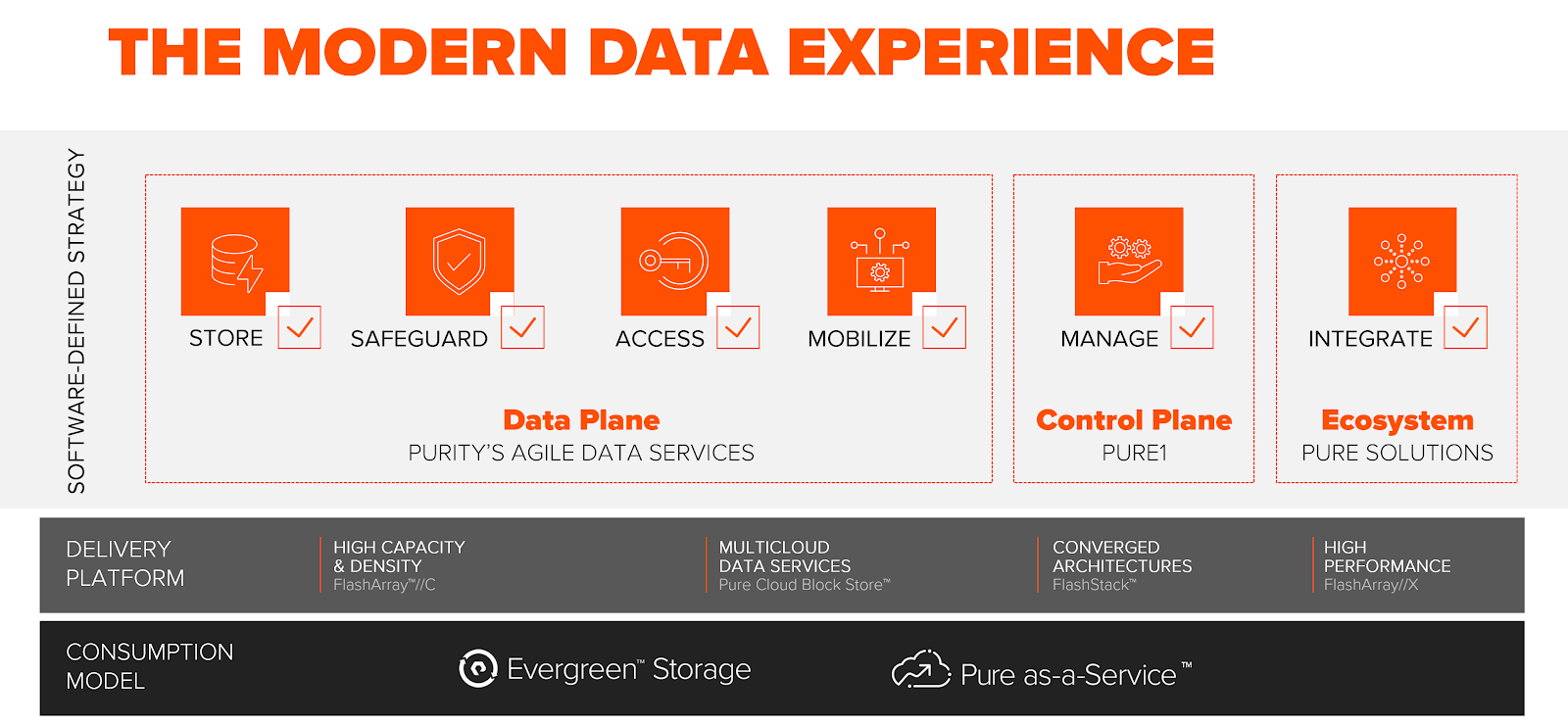When it comes to business-critical data storage systems, people are vocal about what they like—and what they don’t. That’s why we turned to customers while developing the latest release of the Purity//FA storage operating environment. Their feedback helped ensure that our latest release—version 6—prioritizes their concerns and needs.
The topic of data agility came up repeatedly as an emerging requirement. It didn’t matter if we were talking to IT generalists, storage specialists, database and virtualization pros, enterprise architects, application owners, or CIOs. In every part of IT planning and operations, there’s pressure to do more with less, automate as much as possible, and transition to an increasingly remote workforce.
The idea of agile data seemed curious at first. In IT, the word agile is more commonly used to describe a software development process that emphasizes designing and delivering software as a collaborative and continuous process, rather than following a predefined plan from start to finish.
Our customers describe two kinds of data agility that Purity provides:
- At an operational level, Purity makes it effortless for them to store, manage, and access their data. That simplification and a robust suite of ecosystem integrations saves all kinds of time that they used to waste on daily operations and mundane management tasks.
- At an operational level, Purity makes it effortless for them to store, manage, and access their data. That simplification and a robust suite of ecosystem integrations saves all kinds of time that they used to waste on daily operations and mundane management tasks.

With its focus on Agile Data Services, Purity 6 empowers you to gain greater insight and control over your business. Purity 6 adds new capabilities that solve two major business problems:
- ActiveDR™: If you want to increase your organization’s business resilience by replicating data between geographically remote data centers or co-lo facilities, Purity’s new ActiveDR feature provides a simple-to-deploy, flexible, and cost-effective disaster-recovery solution. ActiveDR complements ActiveCluster™, which provides business continuity within metro-distance data centers or cloud-availability groups. ActiveDR supports VMware SRM, SQL, Oracle, SAP, and MongoDB.
- //FA Files: For companies that primarily operate business-critical block workloads, but also need to run file workloads, Purity’s new File Services add robust support for NFS and SMB. This is an important capability because it lets you retain Purity benefits including efficient data reduction and simple operation as you add file workloads to your block systems.
In addition, Pure’s support for NVMe-oF through the powerful RoCE protocol shows our leadership in extending the advantages of NVMe beyond storage media to your entire network. In sum, these capabilities deliver the agility organizations need to extract maximum business value from their IT infrastructure.
Learn more from my colleagues:
Lisa Walker provides more in-depth information on ActiveDR and downtime:
It’s a Business Issue, Not Just an IT Issue.
Alan Driscoll dives deeper into file services in his post:
Why You Should Be Excited about FlashArray File Services.
Listen to the Pure Report Podcast to hear James Gallegos deliver highlights of two key new capabilities for FlashArray: unified block and file protocol support with NFS and SMB, along with active disaster recovery built on brand new continuous replication technology.






